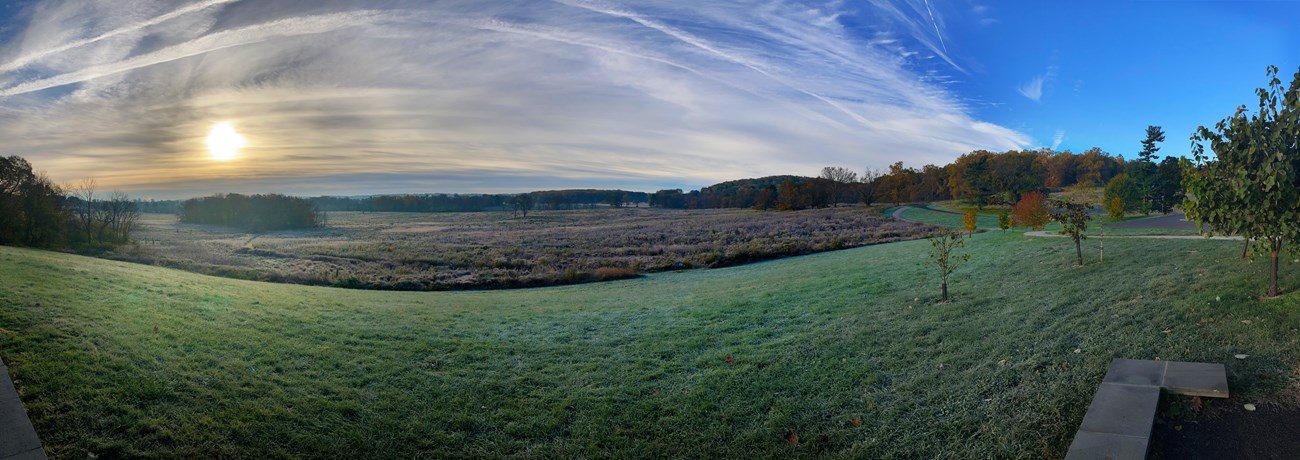
NPS Photo / G. Purifoy GrasslandsAfter forested lands, grasslands (Festuca herbaceous alliance) comprise the second largest percentage of park property – almost 32% (1,330 acres). This particular vegetation community is further subdivided into mowed lawn and tall grass. Prior to implementation of the Field Management Plan in 1992 (Valley Forge NHP), approximately 1,050 acres of mowed lawn were maintained south of the Schuylkill River. In 2005, 914 acres of former lawn are now managed as tall grass meadows. The establishment of tall grass meadows meets several management objectives, including a return to a landscape more suggestive of the small grain agriculture prior to the arrival of the Continental Army and a good habitat for birds and small mammals. Common graminoid species within the tall grass community include redtop, broom sedge, panic grass, sweet vernal grass, orchard grass, tall fescue, red fescue, and purple top (Lundgren, et al. 2002). Broom sedge and purple top are native species. A Diverse CommunityTall grass meadows provide refuge and nesting habitat for songbirds, small animals, and other park fauna. Some of the highest bird species richness counts occur in grassland habitat. Specific examples of wildlife that are dependent on grasslands and other successional habitats include field sparrow, grasshopper sparrow, eastern meadowlark, northern bobwhite, northern harrier, milk snakes, and northern brown snakes. The greatest threat to grassland vegetation is the presence of invasive species, which often out-compete native vegetation for light, nutrients, and space. |
Last updated: March 24, 2025
